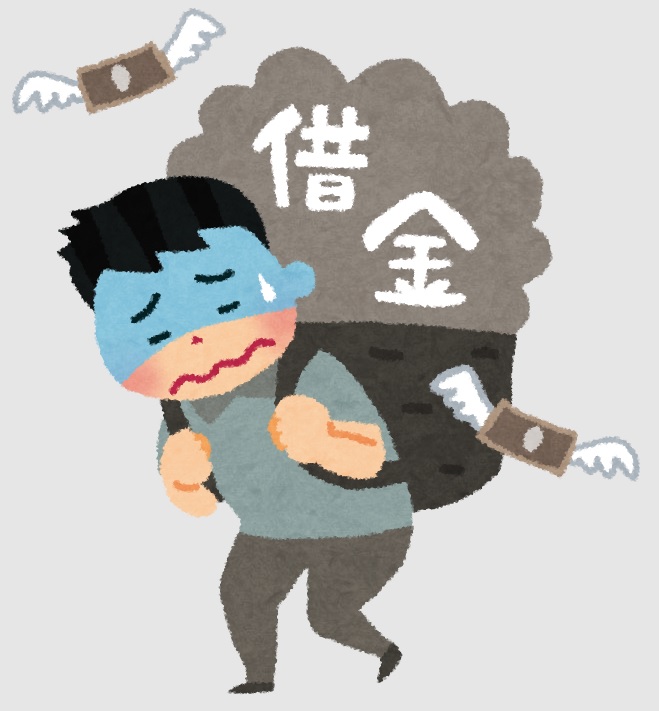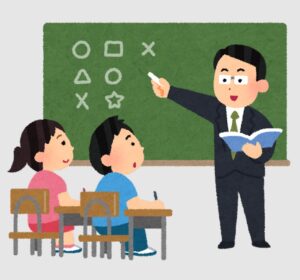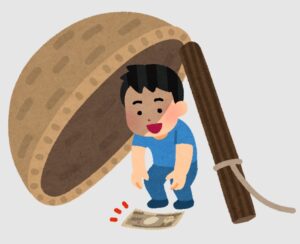管理人オススメコンテンツはこちら
「いい借金・悪い借金|利息を払う側で終わるか、もらう側になるか」
〜前回のつづき〜
●借金に依存するアメリカ人の実態(つづき)
アメリカ人の借金事情を
見てきたんですけど
借金というと
マイナスのイメージが
非常に強いと思うんですね。
ただ借金自体は
悪いものじゃないんですよ。
ここは
覚えておいてほしい所なんですけど
「借金=悪だ!」
という事ではないんですよ。
悪いようにも
良いようにもなる
というのが借金で
借りたお金を何に使うか?
という事こそ非常に重要な訳ですね。
借金自体は悪ではなくて
・良い借金
・悪い借金
が有るという事を
知っておいて欲しいですね。
では
良い借金と悪い借金の違いというのは
何なんだという事を
お話ししていきたいんですけど
例えば
金利1%で1千万円借りたとする。
そうすると
利息は年間10万円
支払う事になるんですね。
仮にその
1千万円を借りたお金で
利回り5%で運用する事が出来れば
利益は
年間50万円あがる訳ですね。
という事で
差額の40万円は儲け
という事になります。
もう一度計算を
しなおしてみたいんですけど
借りた1千万円で
利回り年間50万円運用して稼いで
年間10万円利息を支払うから
差し引き40万円の儲け
という事になりますよね?
これはいわゆる
『いい借金』なんですよ。
こういうのが
『いい借金』なんですね。
不動産投資なんかは
全部この考えなんですよ。
仮に銀行から金利1%で借りて
5%で回る不動産を買おうとか
(実際には表面利回り5%では回らない。
持ち出しになってしまう事がほとんど)
例えば
10%で回せる不動産が有ったとしたなら
9%の利鞘を抜ける。
儲かるという事ですね。
この投資利回りと
借入金利の差を
『イールドギャップ』と言います。
覚えなくてもいいですけど
頭の片隅には置いておいてください。
「おー!これはいいじゃないか!」
と言って
「ドンドン借金して
ドンドン資産を買って
ドンドン利鞘で儲けたら
錬金術じゃないか!」
と思うかもしれません。
この考え方は正しいんですけど
ただこの方法の唯一の問題は
こんなにうまくいくとは限らない
という事なんですよ。
ここがうまく出来たら
確かにそのとおりなんですけどね。
一方で借りたお金が
何も生み出さない場合というのは
これは
『悪い借金』になっちゃうんですよ。
〜〜〜つづく〜〜〜
Special Thanks college president Ryo.
●おまけ
≪≪perplexityちゃんによる文章まとめ≫≫
借金には悪いイメージがあるが、本質的に悪ではない。大切なのは借りたお金をどう使うかであり、使い方次第で「良い借金」と「悪い借金」に分かれる。
例えば、金利1%で1,000万円を借り、年利5%で運用すれば年間50万円の利益が得られ、利息10万円を差し引いて40万円の純利益が生まれる。これが「良い借金」の典型であり、不動産投資などに応用される。このように、借入金利と運用利回りの差を「イールドギャップ」と呼び、ここが利益の源になる。
一方で、借りたお金で何の収益も得られなければ、それは「悪い借金」となる。つまり借金は悪ではなく、資産を増やすために賢く使えば、強力な味方になり得るということだ。
- https://makes-g.co.jp/navi/4197/
- https://www.businessinsider.jp/article/267597/
- https://manabu.orixbank.co.jp/archives/381
- https://www.aqutics.jp/blog/glossary_detail/123
- https://manabu.orixbank.co.jp/archives/104
- https://www.dir.co.jp/report/column/20170719_012145.html
- http://blog.livedoor.jp/usretail/archives/52174218.html
- https://news.yahoo.co.jp/articles/8a9bbf3834041adb6b9bce17de65c2aab26e3e15
- https://www.nihonzaitaku.co.jp/mailmag/category03/post-444.html
- https://risshi.or.jp/mission/podcast/2337/
≪≪Chat-GPTくんによる英訳≫≫
~Continuation from the previous section~
【The Reality of Debt-Dependent Americans (continued)】
We’ve been looking into the debt situation among Americans.
When people hear the word “debt,” it usually carries a very negative image, doesn’t it?
But in truth, debt itself isn’t necessarily a bad thing.
This is something I really want you to remember:
> “Debt = Evil”
That’s not actually the case.
Debt can be good or bad —
it all depends on how you use the money you borrow.
So, it’s not that debt itself is evil.
Rather, there are two types of debt you should know about:
Good debt
Bad debt
Now, what exactly is the difference between the two?
Let’s talk about that.
For example, let’s say you borrow 10 million yen at an interest rate of 1%.
That means you’ll be paying 100,000 yen in interest per year.
If you can invest that borrowed 10 million yen at a 5% return,
your annual profit would be 500,000 yen.
In that case, the difference — 400,000 yen — becomes your net gain.
Let’s go over that again:
You earn 500,000 yen from your investment,
pay 100,000 yen in interest,
and end up with 400,000 yen in profit.
This is what we call “good debt.”
That’s exactly what good debt means.
Real estate investment, for example, is based entirely on this idea.
Let’s say you borrow money from a bank at 1% interest
and buy a property that yields 5%.
(Of course, in reality, a “5% yield” on paper doesn’t usually work out that cleanly —
you often end up paying out of pocket.)
But suppose you find a property that actually yields 10%.
Then you can earn a 9% margin —
that’s profit.
The difference between the investment return and the borrowing rate
is called the “yield gap.”
You don’t need to memorize it,
but it’s good to keep the term in mind.
You might think,
> “Wow, this sounds great!”
> “If I just keep borrowing money, buying assets,
> and profiting off the yield difference,
> it’s like alchemy!”
And yes, that way of thinking is correct —
but there’s just one big problem:
Things don’t always go that smoothly.
If it works out, fantastic.
But it often doesn’t.
And on the other hand,
if the money you borrow doesn’t generate anything in return,
that becomes what’s known as “bad debt.”
Special Thanks OpenAI and Perplexity AI, Inc





-300x300.jpg)


